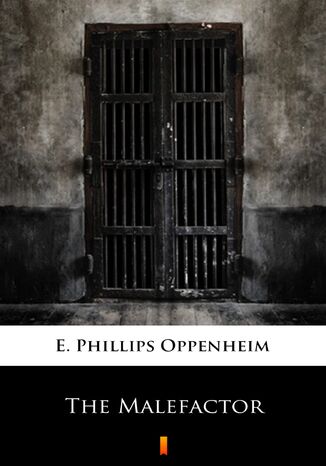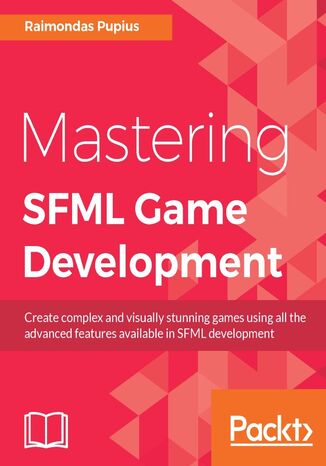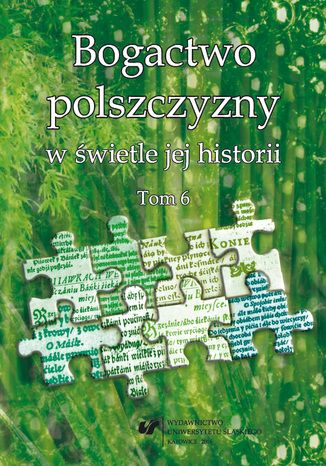Kategorie
Ebooki
-
Biznes i ekonomia
- Bitcoin
- Bizneswoman
- Coaching
- Controlling
- E-biznes
- Ekonomia
- Finanse
- Giełda i inwestycje
- Kompetencje osobiste
- Komputer w biurze
- Komunikacja i negocjacje
- Mała firma
- Marketing
- Motywacja
- Multimedialne szkolenia
- Nieruchomości
- Perswazja i NLP
- Podatki
- Polityka społeczna
- Poradniki
- Prezentacje
- Przywództwo
- Public Relation
- Raporty, analizy
- Sekret
- Social Media
- Sprzedaż
- Start-up
- Twoja kariera
- Zarządzanie
- Zarządzanie projektami
- Zasoby ludzkie (HR)
-
Dla dzieci
-
Dla młodzieży
-
Edukacja
-
Encyklopedie, słowniki
-
E-prasa
- Architektura i wnętrza
- BHP
- Biznes i Ekonomia
- Dom i ogród
- E-Biznes
- Ekonomia i finanse
- Ezoteryka
- Finanse
- Finanse osobiste
- Firma
- Fotografia
- Informatyka
- Kadry i płace
- Kobieca
- Komputery, Excel
- Księgowość
- Kultura i literatura
- Naukowe i akademickie
- Ochrona środowiska
- Opiniotwórcze
- Oświata
- Podatki
- Podróże
- Psychologia
- Religia
- Rolnictwo
- Rynek książki i prasy
- Transport i Spedycja
- Zdrowie i uroda
-
Historia
-
Informatyka
- Aplikacje biurowe
- Bazy danych
- Bioinformatyka
- Biznes IT
- CAD/CAM
- Digital Lifestyle
- DTP
- Elektronika
- Fotografia cyfrowa
- Grafika komputerowa
- Gry
- Hacking
- Hardware
- IT w ekonomii
- Pakiety naukowe
- Podręczniki szkolne
- Podstawy komputera
- Programowanie
- Programowanie mobilne
- Serwery internetowe
- Sieci komputerowe
- Start-up
- Systemy operacyjne
- Sztuczna inteligencja
- Technologia dla dzieci
- Webmasterstwo
-
Inne
-
Języki obce
-
Kultura i sztuka
-
Lektury szkolne
-
Literatura
- Antologie
- Ballada
- Biografie i autobiografie
- Dla dorosłych
- Dramat
- Dzienniki, pamiętniki, listy
- Epos, epopeja
- Esej
- Fantastyka i science-fiction
- Felietony
- Fikcja
- Humor, satyra
- Inne
- Klasyczna
- Kryminał
- Literatura faktu
- Literatura piękna
- Mity i legendy
- Nobliści
- Nowele
- Obyczajowa
- Okultyzm i magia
- Opowiadania
- Pamiętniki
- Podróże
- Poemat
- Poezja
- Polityka
- Popularnonaukowa
- Powieść
- Powieść historyczna
- Proza
- Przygodowa
- Publicystyka
- Reportaż
- Romans i literatura obyczajowa
- Sensacja
- Thriller, Horror
- Wywiady i wspomnienia
-
Nauki przyrodnicze
-
Nauki społeczne
-
Podręczniki szkolne
-
Popularnonaukowe i akademickie
- Archeologia
- Bibliotekoznawstwo
- Filmoznawstwo
- Filologia
- Filologia polska
- Filozofia
- Finanse i bankowość
- Geografia
- Gospodarka
- Handel. Gospodarka światowa
- Historia i archeologia
- Historia sztuki i architektury
- Kulturoznawstwo
- Lingwistyka
- Literaturoznawstwo
- Logistyka
- Matematyka
- Medycyna
- Nauki humanistyczne
- Pedagogika
- Pomoce naukowe
- Popularnonaukowa
- Pozostałe
- Psychologia
- Socjologia
- Teatrologia
- Teologia
- Teorie i nauki ekonomiczne
- Transport i spedycja
- Wychowanie fizyczne
- Zarządzanie i marketing
-
Poradniki
-
Poradniki do gier
-
Poradniki zawodowe i specjalistyczne
-
Prawo
- BHP
- Historia
- Kodeks drogowy. Prawo jazdy
- Nauki prawne
- Ochrona zdrowia
- Ogólne, kompendium wiedzy
- Podręczniki akademickie
- Pozostałe
- Prawo budowlane i lokalowe
- Prawo cywilne
- Prawo finansowe
- Prawo gospodarcze
- Prawo gospodarcze i handlowe
- Prawo karne
- Prawo karne. Przestępstwa karne. Kryminologia
- Prawo międzynarodowe
- Prawo międzynarodowe i zagraniczne
- Prawo ochrony zdrowia
- Prawo oświatowe
- Prawo podatkowe
- Prawo pracy i ubezpieczeń społecznych
- Prawo publiczne, konstytucyjne i administracyjne
- Prawo rodzinne i opiekuńcze
- Prawo rolne
- Prawo socjalne, prawo pracy
- Prawo Unii Europejskiej
- Przemysł
- Rolne i ochrona środowiska
- Słowniki i encyklopedie
- Zamówienia publiczne
- Zarządzanie
-
Przewodniki i podróże
- Afryka
- Albumy
- Ameryka Południowa
- Ameryka Środkowa i Północna
- Australia, Nowa Zelandia, Oceania
- Austria
- Azja
- Bałkany
- Bliski Wschód
- Bułgaria
- Chiny
- Chorwacja
- Czechy
- Dania
- Egipt
- Estonia
- Europa
- Francja
- Góry
- Grecja
- Hiszpania
- Holandia
- Islandia
- Litwa
- Łotwa
- Mapy, Plany miast, Atlasy
- Miniprzewodniki
- Niemcy
- Norwegia
- Podróże aktywne
- Polska
- Portugalia
- Pozostałe
- Przewodniki po hotelach i restauracjach
- Rosja
- Rumunia
- Słowacja
- Słowenia
- Szwajcaria
- Szwecja
- Świat
- Turcja
- Ukraina
- Węgry
- Wielka Brytania
- Włochy
-
Psychologia
- Filozofie życiowe
- Kompetencje psychospołeczne
- Komunikacja międzyludzka
- Mindfulness
- Ogólne
- Perswazja i NLP
- Psychologia akademicka
- Psychologia duszy i umysłu
- Psychologia pracy
- Relacje i związki
- Rodzicielstwo i psychologia dziecka
- Rozwiązywanie problemów
- Rozwój intelektualny
- Sekret
- Seksualność
- Uwodzenie
- Wygląd i wizerunek
- Życiowe filozofie
-
Religia
-
Sport, fitness, diety
-
Technika i mechanika
Audiobooki
-
Biznes i ekonomia
- Bitcoin
- Bizneswoman
- Coaching
- Controlling
- E-biznes
- Ekonomia
- Finanse
- Giełda i inwestycje
- Kompetencje osobiste
- Komunikacja i negocjacje
- Mała firma
- Marketing
- Motywacja
- Nieruchomości
- Perswazja i NLP
- Podatki
- Polityka społeczna
- Poradniki
- Prezentacje
- Przywództwo
- Public Relation
- Sekret
- Social Media
- Sprzedaż
- Start-up
- Twoja kariera
- Zarządzanie
- Zarządzanie projektami
- Zasoby ludzkie (HR)
-
Dla dzieci
-
Dla młodzieży
-
Edukacja
-
Encyklopedie, słowniki
-
E-prasa
-
Historia
-
Informatyka
-
Inne
-
Języki obce
-
Kultura i sztuka
-
Lektury szkolne
-
Literatura
- Antologie
- Ballada
- Biografie i autobiografie
- Dla dorosłych
- Dramat
- Dzienniki, pamiętniki, listy
- Epos, epopeja
- Esej
- Fantastyka i science-fiction
- Felietony
- Fikcja
- Humor, satyra
- Inne
- Klasyczna
- Kryminał
- Literatura faktu
- Literatura piękna
- Mity i legendy
- Nobliści
- Nowele
- Obyczajowa
- Okultyzm i magia
- Opowiadania
- Pamiętniki
- Podróże
- Poezja
- Polityka
- Popularnonaukowa
- Powieść
- Powieść historyczna
- Proza
- Przygodowa
- Publicystyka
- Reportaż
- Romans i literatura obyczajowa
- Sensacja
- Thriller, Horror
- Wywiady i wspomnienia
-
Nauki przyrodnicze
-
Nauki społeczne
-
Popularnonaukowe i akademickie
-
Poradniki
-
Poradniki zawodowe i specjalistyczne
-
Prawo
-
Przewodniki i podróże
-
Psychologia
- Filozofie życiowe
- Komunikacja międzyludzka
- Mindfulness
- Ogólne
- Perswazja i NLP
- Psychologia akademicka
- Psychologia duszy i umysłu
- Psychologia pracy
- Relacje i związki
- Rodzicielstwo i psychologia dziecka
- Rozwiązywanie problemów
- Rozwój intelektualny
- Sekret
- Seksualność
- Uwodzenie
- Wygląd i wizerunek
- Życiowe filozofie
-
Religia
-
Sport, fitness, diety
-
Technika i mechanika
Kursy video
-
Bazy danych
-
Big Data
-
Biznes, ekonomia i marketing
-
Cyberbezpieczeństwo
-
Data Science
-
DevOps
-
Dla dzieci
-
Elektronika
-
Grafika/Wideo/CAX
-
Gry
-
Microsoft Office
-
Narzędzia programistyczne
-
Programowanie
-
Rozwój osobisty
-
Sieci komputerowe
-
Systemy operacyjne
-
Testowanie oprogramowania
-
Urządzenia mobilne
-
UX/UI
-
Web development
-
Zarządzanie
Podcasty
This 1907 novel was one of the early popular novels of society by E. Phillips Oppenheim. The story revolves around the conflict between a gentlemans obligation to defend the honor of a lady, and his responsibility to his own feelings, family, and freedom. Sir Wingrave, imprisoned wrongfully for killing a man, finishes his sentence and plans his vengeance against those who would not tell the truth to help him during his trial. He becomes misanthropic, seeking only revenge. He wishes to be a malefactor, doing only evil. His class, upbringing, and social ties all mitigate his evil. A young journalist, enamored with the thought of spending time with a man with such a history, offers himself as a secretary. Does Sir Wingrave succeed in taking his vengeance? Does his secretary betray him or help him?
Around the World in Eighty Days
The hero of the novel, Phileas Fogg, made a bet that he would be able to circumnavigate the globe from west to east in no more than 80 days, given the technical capabilities of 19th century transport. Foggs journey begins in England, and then he goes to France, Italy, Egypt, India, China, Japan and America. In India, Fogg and his servant, Jean Passepartout, save the beautiful Audu, who is about to be burned alive with the body of her late husband. Subsequently, she becomes Foggs wife. Detective Fix fixes the journey: the police are convinced that it was Fogg who stole a large sum from the Bank of England, and betting is an opportunity to evade punishment.
Nitin Gaur, Luc Desrosiers, Venkatraman Ramakrishna, Petr Novotny, ...
Blockchain and Hyperledger technologies are hot topics today. Hyperledger Fabric and Hyperledger Composer are open source projects that help organizations create private, permissioned blockchain networks. These find application in finance, banking, supply chain, and IoT among several other sectors. This book will be an easy reference to explore and build blockchain networks using Hyperledger technologies.The book starts by outlining the evolution of blockchain, including an overview of relevant blockchain technologies. You will learn how to configure Hyperledger Fabric and become familiar with its architectural components. Using these components, you will learn to build private blockchain networks, along with the applications that connect to them. Starting from principles first, you’ll learn to design and launch a network, implement smart contracts in chaincode and much more. By the end of this book, you will be able to build and deploy your own decentralized applications, handling the key pain points encountered in the blockchain life cycle.
The House of the Dead. Or, Prison Life in Siberia
Fyodor Mikhailovich Dostoevsky
Aleksandr Petrovich lives through a spiritual re-awakening that culminates with his release from the prison camp. The narrator has been sentenced to penalty deportation to Siberia and ten years of hard labor for murdering his wife. Published in 1861, House of the Dead is a semi-autobiographical work based upon Dostoevskys exile to Siberia where he was punished with hard labor after he was initially convicted to be punished by death by firing-squad for his involvement in the Petrashevsky Circle. This experience allowed him to describe with great authenticity the conditions of prison life and the characters of the convicts. Dostoyevsky skillfully portrays the inmates of the prison with sympathy for their plight, and admiration for their energy, ingenuity and talent. The book is a loosely-knit collection of facts, events and philosophical discussion organized by theme rather than as a continuous story.
Szatan i Judasz (Tom 9). Szatan i Judasz. Jasna Skała
Szatan i Judasz. Jasna Skała to dziewiąta część z 11-tomowego cyklu przygodowego autorstwa Karola Maya. Grupa dzielnych bohaterów odbywa wspólnie szalone podróże, aby mierzyć się z wszelkiej maści niegodziwcami, walczyć o sprawiedliwość i odnajdywać zaginione skarby. Dzięki pracy zespołowej, zaufaniu i wzajemnej pomocy udaje im się wyjść obronną ręką z najgorszych opresji.
Autodesk Inventor 2022 PL / 2022+ / Fusion 360. Podstawy metodyki projektowania
Poznaj podstawy systemów Autodesk Inventor i Fusion 360! Naucz się wydajnie projektować Twórz profesjonalną dokumentację Zaliczaj kolokwia w pierwszych terminach Autodesk Inventor Professional to jeden z dwóch najpopularniejszych systemów CAD w swojej klasie. Uzupełnia go rozwiązanie PLM typu cloud computing - Fusion 360. Jeśli chcesz szybko rozpocząć samodzielne projektowanie za pomocą tych systemów w polskiej lub angielskiej wersji językowej albo bez problemów zaliczyć kolokwium z Inventora, sięgnij po tę książkę! Podstawy metodyki projektowania to więcej niż wprowadzenie do zagadnienia. Książka zawiera metodycznie poprawne i zweryfikowane podczas tysięcy godzin zajęć efektywne ćwiczenia i absolutne minimum wiedzy teoretycznej. Taki układ treści pozwala na samodzielne zrealizowanie wszystkich etapów modelowania 3D i redagowania dokumentacji 2D i 3D, a także stworzenie poprawnego projektu - poprawnego, czyli łatwego do modyfikacji, będącej istotą procesu projektowania. To prosta droga do wykształcenia nawyków, które sprawią, że praca projektowa stanie się naprawdę wydajna. Autor książki, profesor Uniwersytetu Warmińsko-Mazurskiego, dzieli się swoją ogromną wiedzą i bogatym doświadczeniem wynikającym z pracy na kierowniczych stanowiskach technicznych w przemyśle, jak również z wielu lat kształcenia studentów i uczestników kursów CAD. W tej publikacji podpowiada, jak skutecznie uczyć poprawnej metodyki parametrycznego projektowania 3D i redagowania dokumentacji 2D i 3D, jeśli ma się do dyspozycji niewielką liczbę godzin zajęć. Dzięki odpowiedniemu przygotowaniu dydaktycznemu autora książka sprawdzi się doskonale zarówno w przypadku samodzielnej nauki, jak i zajęć uniwersyteckich. Wiedzę i umiejętności profesora Andrzeja Jaskulskiego od lat docenia firma Autodesk. Interfejs użytkownika Konfiguracja środowiska i szablony użytkownika Podstawy parametrycznego hierarchicznego (FBM) modelowania części i zespołów Redagowanie dokumentacji 2D i 3D (prezentacje) Ćwiczenia przejściowe idealne do przygotowania się do kolokwium Zadania kontrolne Zaprzyjaźnij się z systemami Autodesk Inventor i Fusion 360 i osiągaj szybciej swoje cele!
SFML is a cross-platform software development library written in C++ with bindings available for many programming languages. It provides a simple interface to the various components of your PC, to ease the development of games and multimedia applications. This book will help you become an expert of SFML by using all of its features to its full potential. It begins by going over some of the foundational code necessary in order to make our RPG project run. By the end of chapter 3, we will have successfully picked up and deployed a fast and efficient particle system that makes the game look much more ‘alive’. Throughout the next couple of chapters, you will be successfully editing the game maps with ease, all thanks to the custom tools we’re going to be building. From this point on, it’s all about making the game look good. After being introduced to the use of shaders and raw OpenGL, you will be guided through implementing dynamic scene lighting, the use of normal and specular maps, and dynamic soft shadows. However, no project is complete without being optimized first. The very last chapter will wrap up our project by making it lightning fast and efficient.
Bogactwo polszczyzny w świetle jej historii. T. 6
red. Joanna Przyklenk, Wioletta Wilczek
Szósty tom cieszącej się dużym zainteresowaniem serii Bogactwo polszczyzny w świetle jej historii jest publikacją, która przedstawia dorobek ogólnopolskiej konferencji naukowej studentów, doktorantów i młodych doktorów (Katowice, 6 XI 2014). Autorki zgromadzonych w tomie artykułów skupiały się zwykle na takich kwestiach, jak: 1) opis leksyki dawnej (też współczesnej) zorientowany słowotwórczo, semantycznie czy etymologicznie; 2) problemy nominacji w historii polszczyzny – zarówno nominacji prioprialnej, jak i apelatywnej; 3) konceptualizacja pojęć w języku, a co za tym idzie – w kulturze. Wskazane kręgi tematyczne stały się podstawą podziału niniejszej książki na trzy części. Na pierwszą z nich (Wokół wyrazów i znaczeń) złożyły się prace poświęcone analizom słownictwa, a zatem: leksemom autosemantycznym współrdzennym w czystopisach piętnastowiecznych rot kościańskich, znaczeniu czasownika dotknąć w jego metaforycznych rozszerzeniach, przeobrażeniom semantycznym słownictwa związanego ze sferą mentalną, analizie rozwoju znaczeniowego leksemu duży oraz kręgowi semantycznemu leksemów rok i god. W drugiej części (Z problemów nominacji) znalazły się artykuły, w których autorki podjęły się analizy zagadnień nazewniczych i onomastycznych, np. we wczesnej twórczości Kazimierza Wierzyńskiego. Omówiono też historycznie zmienną konceptualizację pojęć na przykładzie kamienia piorunowego oraz przedstawiono bogactwo nazewnicze polszczyzny dawnej, prezentując nazwy złodzieja. W zamykającej tom części trzeciej (W świetle słów i tekstów – o konceptualizacji w języku i kulturze) zwrócono uwagę na takie zjawiska językowe, jak: element leksyki ekspresywnej dialektu górnośląskiego, czyli leksem pieron; ujęte diachronicznie zagadnienie puryzmu językowego; problem definiowania kobiecości w wybranych opowiadaniach Julii Fiedorczuk. Autorki zebranych w tej publikacji prac udowodniły po raz kolejny, że historia języka polskiego jest zajmującą dziedziną wiedzy, której rozpoznanie przybliża nas do zrozumienia nie tylko epok minionych, ale także współczesnych tendencji rozwojowych polszczyzny i polskiej kultury. Tom jest adresowany do wszystkich osób zainteresowanych historią języka polskiego – językoznawców, studentów kierunków humanistycznych (zwłaszcza filologicznych) oraz licealistów. Szczegółowe ustalenia i proponowane rozwiązania dyskutowanych problemów, jakie znajdujemy w kolejnych artykułach publikacji, mogą zostać wykorzystane w dalszych badaniach nad językiem, kulturą i człowiekiem.








